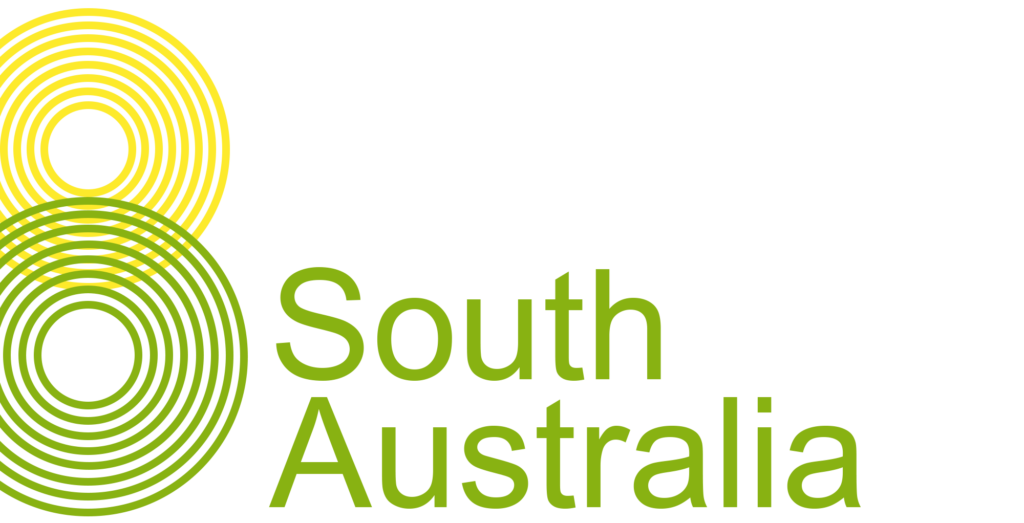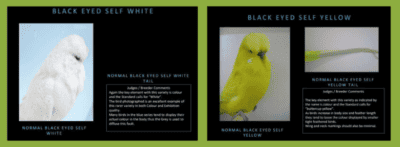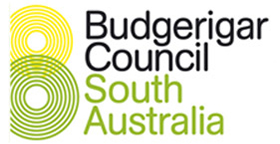
Black Eyed Self Budgerigar/Budgie
The Black Eyed Self Budgerigar/Budgie is probably the first mutation that occurred of the natural green.

Image Courtesy of Rod Turnbull and the ANBC
Observers have reported its presence in very small numbers in wild flocks. Such specimens all had a strong suffusion of green. When examples appeared in captivity, German and Belgian breeders concentrated on the improvement of colour by careful selection. Records indicate that Mr. Joseph Abrahams bred the first yellow budgerigars in England in 1884 using yellows imported from Belgium. The first yellows did not appear in Australia until around 1900. On this occasion, they were brought out from England for Mr. C. H. A. Lienau, of Adelaide, South Australia.
Identification of The Exhibition Black Eyed Self Colour Budgerigar/Budgie
The Standard specifies that the Black Eyed Self Colour budgerigar must have a solid and uniform general body color, which can be pure yellow or white. The rump and underparts should also have a consistent color throughout. The mask should be clear, deep, and wide, extending beyond two large cheek patches and should not be cleft. Faint markings on a clear ground color are visible on the cheeks, the back, and the upper and under wing coverts. The Black Eyed Clear (Self) variety has a dark eye with a white iris ring, and its feet display a mottled combination of pinkish and blue/grey colors. The cock has a blue cere, while the hen has a brown cere. The color of the primary flights should approach that of the body color. Exhibition standards prohibit visible opaline characteristics in the Black Eyed Self variety.
Below is a summary of the Black Eyed Self Colour’s cheek patch, tail quill, and tail feather color.
Distinguishing Black Eyed Self Budgerigars/Budgies
There has been some confusion in the past among exhibitors in distinguishing between Black Eyed Selfs, Dilutes and Greywings. Judging these varieties can also be challenging given the phenotypic variation within each of them. Before Dilutes were introduced as a separate class, breeders sometimes entered Dilutes into the Greywing Class, resulting in disqualification. Since the introduction of Dilutes as a Class they have become more common and sometimes used as outcrosses for Black Eyed Selfs. This can create continuity in body colour suffusion and colour of the cheek patch, blurring the distinction between Black Eyed Selfs and Dilutes.
Key to maintaining varietal fidelity lies with the judges who are the custodians of the written word in The Standard. Exhibition judges must penalize minor departures from the respective variety standards according to the degree of departure. Furthermore, exhibition judges must disqualify major departures and wrong-class birds. This includes Dilutes entered into the Black Eyed Self or the Greywing Class, or Greywings with poor body colour entered into the Dilute Class.
Suggested Pairings to Produce Black Eyed Self Colour Budgerigars/Budgies
Pairing of Black Eye Self Colour to Black Eye Self Colour, Black Eye Self Colour to Cinnamon spit Black Eye Self Colour is also acceptable as the cinnamon form mutates in the self colour and is not visible. These cinnamon bred chicks will however have pink feet whereas the non-cinnamon form has blue/grey feet.

